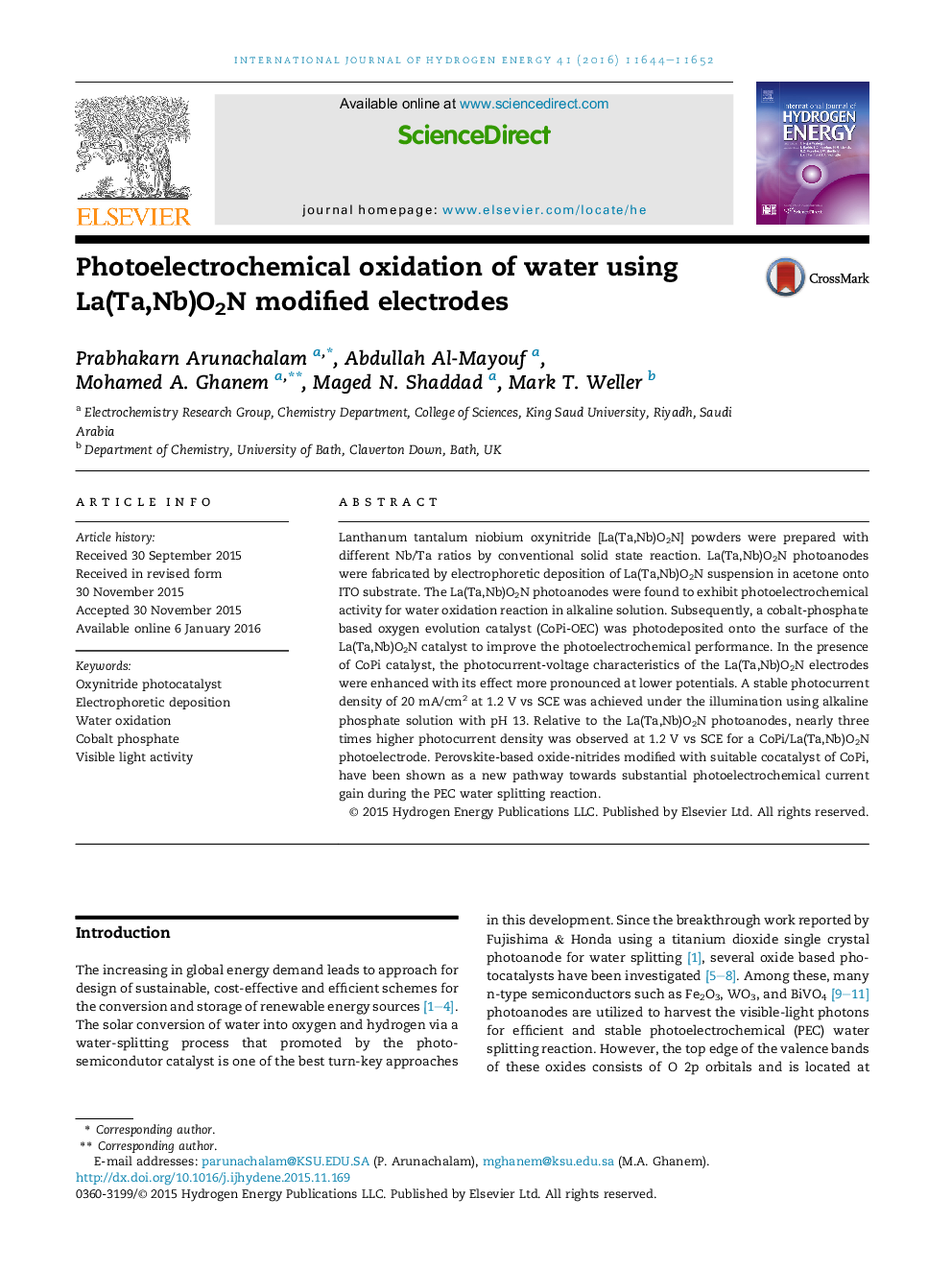| Article ID | Journal | Published Year | Pages | File Type |
|---|---|---|---|---|
| 1268494 | International Journal of Hydrogen Energy | 2016 | 9 Pages |
•New kinds of oxynitride based photocatalysts (La(Ta,Nb)O2N)was reported.•Electrophoretic deposited films functions as photoanodes for water oxidation reaction under visible light illumination.•Incorporation of cobalt phosphate exhibited improved effect on the performances and stability.•Higher oxygen generation was observed in presence of Cobalt phosphate loaded photoanodes.•This provides a new route to prepare nanosized photoanodes for water splitting reaction.
Lanthanum tantalum niobium oxynitride [La(Ta,Nb)O2N] powders were prepared with different Nb/Ta ratios by conventional solid state reaction. La(Ta,Nb)O2N photoanodes were fabricated by electrophoretic deposition of La(Ta,Nb)O2N suspension in acetone onto ITO substrate. The La(Ta,Nb)O2N photoanodes were found to exhibit photoelectrochemical activity for water oxidation reaction in alkaline solution. Subsequently, a cobalt-phosphate based oxygen evolution catalyst (CoPi-OEC) was photodeposited onto the surface of the La(Ta,Nb)O2N catalyst to improve the photoelectrochemical performance. In the presence of CoPi catalyst, the photocurrent-voltage characteristics of the La(Ta,Nb)O2N electrodes were enhanced with its effect more pronounced at lower potentials. A stable photocurrent density of 20 mA/cm2 at 1.2 V vs SCE was achieved under the illumination using alkaline phosphate solution with pH 13. Relative to the La(Ta,Nb)O2N photoanodes, nearly three times higher photocurrent density was observed at 1.2 V vs SCE for a CoPi/La(Ta,Nb)O2N photoelectrode. Perovskite-based oxide-nitrides modified with suitable cocatalyst of CoPi, have been shown as a new pathway towards substantial photoelectrochemical current gain during the PEC water splitting reaction.
